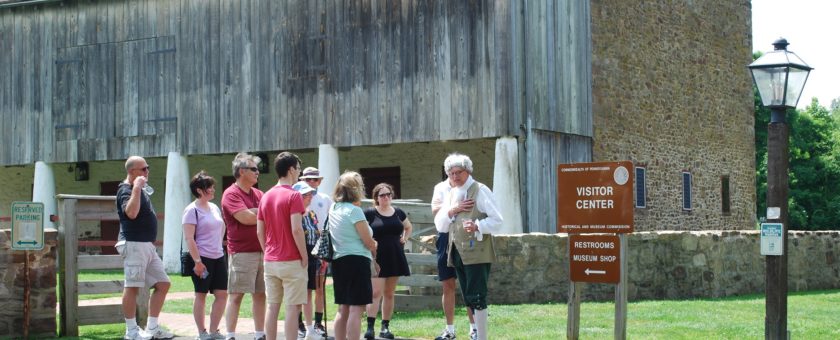What is Living History?
By Steve Griffith
What is Living History?
At its most basic, living history is using trained individuals to help guests understand (interpret) a historical site The two most common methods of living history interpretation are First-Person (when the interpreter dresses in costume, takes on a character, and becomes a person from the past) and Third-Person (when the interpreter, sometimes in costume, describes the time period and site, but doesn’t pretend to be a person from the past.) Both styles of interpretation have their strengths and challenges.
The strength of First-Person Interpretation is that it can transport guests to the time period of the site, presenting guests with the sights, sounds, and even the smells of the period or place being interpreted. In First-Person Interpretation, interpreters stay “in character” no matter what happens. Its weakness is that it is sometimes difficult for the interpreter to fully answer questions in a way most helpful for the guest. Sometimes First-Person Interpretation makes the guest feel awkward as their questions are evaded or rephrased by the interpreter to be answered within the historical time period being represented. How does a First-Person Interpreter respond when someone asks a question about an airplane flying overhead, for example?
The strength of Third-Person Interpretation is that there is no barrier to asking questions and the interpreter can use current examples to help the guest understand the lives of people at the time being presented. The downside of Third-Person Interpretation is that it doesn’t always fully engage the visitor in the time period.
This summer at Graeme Park we are using a combination of these two methods. It is called, Modified First-Person, or “My Time/Your Time”.
My Time/Your Time
Our designated living history interpreters have been asked to create a character (either real or imagined) from the long history of Graeme Park. They are costumed in clothing that is similar to the clothing of the individuals she or he is representing. Our living history interpreters will generally remain in character during conversations with guests, but will be happy to answer questions outside of their character’s time period when it is appropriate. This will most likely happen by using the phrase, “In my time…but in your time…”
For example, if a guest asks, “How long did it take Elizabeth Graeme to travel from her home in Philadelphia to Graeme Park?” the interpreter might reply, “Well, in my time it takes about six hours by coach, I am sure you can do it much more quickly in your time”. Using My Time, Your Time allows the interpreter the flexibility to choose the best way to provide the most complete answer for the guest. This fits with our goal to do all that we can to help our guest understand Graeme Park and the people who lived here.
In addition to our designated living history interpreters, during your visit you may also encounter volunteers in costume who are available to answer any question you may have about Graeme Park and its inhabitants. Generally, they will not be in character. Feel free to engage them in conversation.
For a list of Living History topics at Graeme Park, see this post.
P.S. Graeme Park is always looking for volunteers to help us interpret this unique place. If you are interested in becoming involved as a site interpreter, please contact us at ra-graemepark@state.pa.us.

